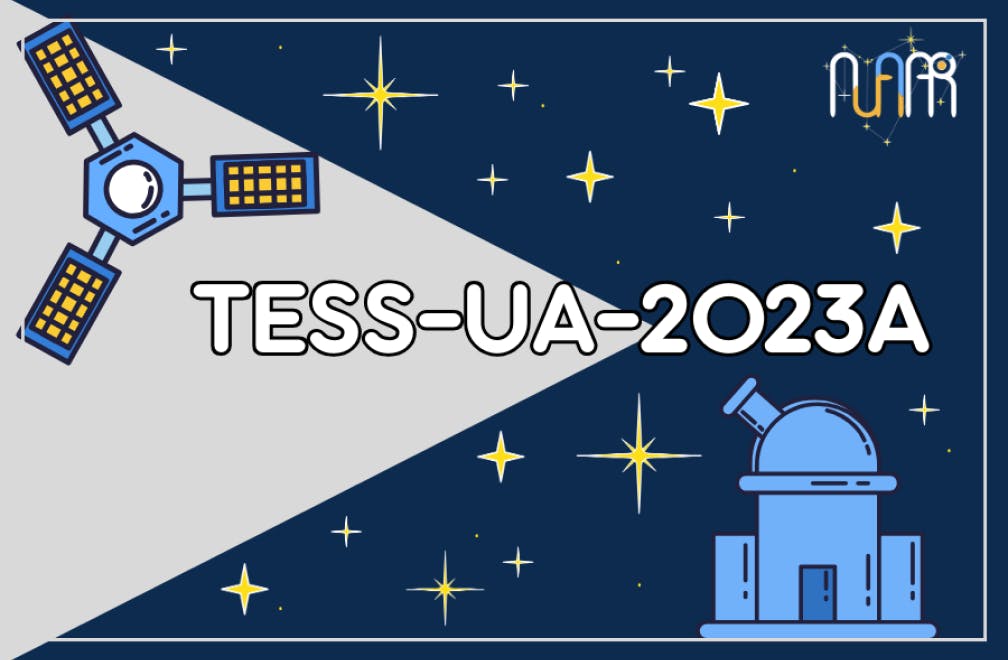TESS-UA-2023A

Some figures
Start date: February 26-27, 2023
End date: November – December 2023
Participants: 60 people, from 9th grade to ~ 40-45 years old
Project goal and tasks
Goal – the project scaling up with several different groups, work on studying system and the research algorithm of a new class of objects (exoplanets), create a separate group for more complex scientific research.
Tasks:
Create a course of lectures for participants' training.
Conduct an advertising campaign of the project and participants enrollment, 30-50 students.
Conduct two-week training.
Select research objects, divide students into groups by a class of the object.
Conduct scientific research.
Write scientific articles based on the research results, proofread them and submit them to scientific journals.
Publish scientific articles.
Prepare students for the scientific conference «CATS 2023», make presentations, write and publish abstracts.
Analyze the project results, identify weak spots of the format and each component of the research algorithm and fix them.
Tasks 1-4 – finished, tasks 5, 6, 7, 9 – work in progress, task 8 – partially completed.
Key organisers and project executors
Dmytro Tvardovskyi – mentor, responsible for the development of the method of studying exoplanets with limited data, responsible for the development of educational materials.
Oleksandra Pyshna – mentor, responsible for the development of educational materials.
Mykyta Bilodid – mentor, responsible for the development of educational materials.
Kateryna Andrych – mentor, responsible for the consultation on the work of the «MAVKA» program.
Oleksander Bazyey – responsible for conducting lectures.
Research topics
Eclipsing binary stars;
Pulsating stars (including stars with multiple periods);
Eclipsing binary stars with a pulsating component;
Transiting exoplanets.
Expected outcomes
13+ scientific publications in peer-reviewed journals.
Study a significant number of variable stars.
Discovery of about a few dozen variable stars.
+1-2 mentors of future scientific projects from among the most motivated participants.
Over 6000 calculated extreme values of brightness for variable stars.
Cool facts
There are a lot of stars with completely different characteristics: starting with re-radiation to the presence of a third object in the system (for example, a massive exoplanet).
For any star of the transit of exoplanets, the calculated mass corresponds not to the planet itself, but to a second star. This hypothesis requires confirmation.
Similar to the previous project, stars with extremely unusual curves О-С were discovered.
Project conclusions
Scaling up of TESS-UΑ-2022 was partially successful.
The number of students increased by 5.5 times, and a new topic (exoplanets) was added. The programs used in scientific research have been revised, and the part of the flaws detected has been removed.
A training system was developed and a course of specialized lectures was recorded, which significantly increased the quality of the participants' training. However, 3.5 weeks (while originally planned 2 weeks) was not enough to reach a sufficient level of training.
In the course, numerous flaws were detected and removed in its next version (see the project «Variable Stars Lectures 2.0»).
Due to numerous requests from the participants, a whole line of specialized materials has been launched. (see the project «Variable Stars Books»).
Message from the CEO of NUAAR
The previous project was undoubtedly successful (despite the rescheduled deadlines), meanwhile concerning the current project our team has controversial views. On the one hand, we managed to attract 60 students to the research – which is a huge number, considering it is almost the same as the total number of astronomers in Ukraine. On the other hand, the project quality has significantly reduced comparing to the previous one due to a number of factors:
A main part of the work was planned for May-June, which is a high season for pupils and students in terms of exams, their admission to universities, etc. And since most of our participants are pupils and students, approximately 2/3 of them were unable to work on research for two months. Additionally, about 2/3 of our team, including two (at that time) out of three mentors, also couldn’t proceed with their work. This was one of my biggest strategic mistakes as a CEO.
Lack of student preparation, in particular lack of the educational materials, can also be included in the strategic planning flaws.
Lack of a sufficient number of mentors, which are extremely difficult to find in general. It took about six months to find the first four mentors.
All this has led to the fact that only about a quarter of 60 students stayed to actively participate in the research. At the same time, a bunch of cool discoveries were made, four manuals within the project «Variable Stars Books» were created, a much more successful scientific conference CATS 2023 was held, two students of TESS-UA-2023A became members of our team, and one of them – Yaryna Holoshchuk – became the manager of the educational department. Thus, according to absolute indicators, the project shows much greater results than the previous TESS-UA-2022. However, according to relative indicators, the outcomes are still unsatisfactory.
The 2023A project will run for 2 more months, so we have a good chance to improve the situation and turn this project into a successful one. As always, there is a lot of work ahead and at least a year of positive evolution of the TESS-UA projects.
Related projects
TESS-UA-2022
The conference CATS («Comets, Asteroids, exoplanetary Transits and variable Stars»)
TESS-UA-2023B
Variable Stars Lectures
Variable Stars Books
